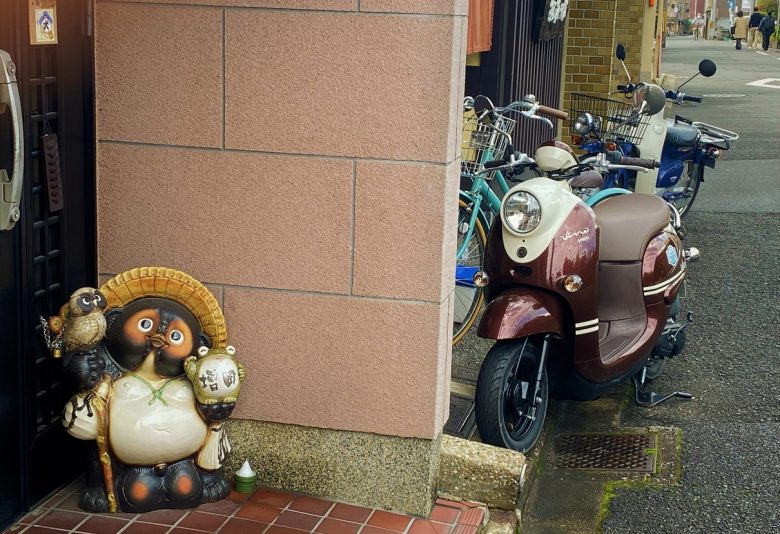
Living in Japan’s traditions: Tanuki decorations
Completing your Japanese study program in Japan, working for a Japanese company, being an intern in a local firm or completing your studies at a Tokyo or Kyoto university shall all give you a good discovery of the Japanese culture, but some things continue a mystery in need of explanation. One of these are the “Tanuki” decorations in some houses and shops entrances.

At first glance, it may be difficult to identify as a Tanuki, specially being a native animal to Japan. It is commonly referred as a subspecies of the raccoon dog and therefore translated as a Japanese racoon dog, but it is actually more related to wolves, foxes, and domestic dogs. It is particularly part of the mustelids, which include weasels, badgers, and otters.
These decorations can be found anywhere in Japan but most commonly in the Kansai area. The reason for this appears to date back to 1952 when Emperor Showa visited Shiga, the local area of Tetsuzo Fujiwara, creator of the first Tanuki statue. Being a unique aspect of Shiga, the locals placed this statue at the entrance of their houses to warmly welcome the arrival of the Emperor. From this event on, people have continued to do so not only in Shiga but also in other areas of Kansai, specially Kyoto and Osaka. For those staying in Kyoto with SAKURA HOUSE, there will be more than one chance to meet with these interesting creatures on a daily base.

As with many aspects of Japan, these creatures carry a special meaning within the culture and each aspect of its appearance makes reference to it.
・The large straw hat serves as a ward against disasters.
・The big round eyes resemble the aspect of being well aware and conscious at all times.
・The common smile gesture is a reminder of being joyfully helpful to others.
・The sake flask symbolizes the thankfulness for receiving food.
・The passbook on its hand represents trust.
・Their big belly is a common symbol of generosity
・Finally, their thick tail represents the support to always stand upright.
As with many things, variations tool place throughout the years and there are many different types of poses and garments, for example the picture below was taken at the entrance of an izakaya bar, where the tanuki is only carrying a large sake bottle and has the distinctive bandana on that characterizes many of these shop personnel.

But its appearance isn’t the only thing that carries on a special meaning, its name also appears to hide a particular reason for its popularity. The writing for “tanuki” (狸) is the same as “ta” (他, other) and “nuki” (抜き, to pull out) separated, meaning something similar to “to pull out all other things other than what is desired”. In other words, the attraction of success and better self-development, making it a suitable reason to place it at the entrance of houses and shops, to avoid the undesired from entering.
Above this, the tanuki are an important part of Japanese folklore, where tales share their magical properties of shapeshifting and generating good luck.
Other interesting facts about these creatures are that they live in monogamous pairs, highlighting their symbolism of trust and success.

This is just one other interesting aspect of things to come across while living in Japan, but there are many more to discover. So if you are planning your stay in Tokyo, Kyoto or the coast area of Izu, feel free to contact our multicultural staff to help you find your home in Japan.
SAKURA HOUSE
Nishi-Shinjuku K-1 Bldg. 2F
7-2-6 Nishi-Shinjuku, Shinjuku-Ku Tokyo, Japan
Postal code: 160-0023
Google map
- From Japan:
- 03-5330-5250
- From outside Japan:
- +81-3-5330-5250
- Mail:
- [email protected]
- Office hours:
- 8:50 am to 8:00 pm
We are open every day of the year.
- Tokyo time:
- 11:16(We are open now!)







